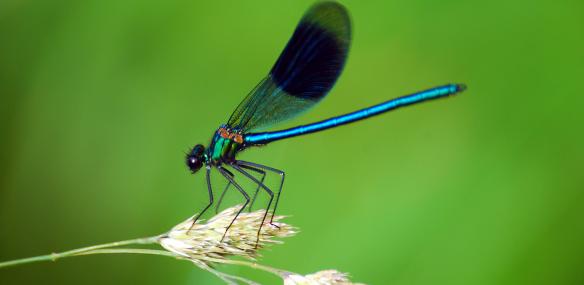The banded demoiselle is a large damselfly which lives along the edges of slow-flowing rivers and canals, still ponds and lakes and amongst lush vegetation. So named for the distinctive 'fingerprint' mark on the males' wings, banded demoiselles are very territorial, performing fluttering display flights to win over females. They are on the wing from May to August.
The Wildlife Trusts manage many wetland nature reserves for the benefit of all kinds of wildlife, including the banded demoiselle. But these precious sites are under threat from development, drainage and climate change. You can help by supporting your local Trust and becoming a member; you'll find out about exciting wildlife happenings, events on your doorstep and volunteering opportunities and be helping local wildlife along the way.
